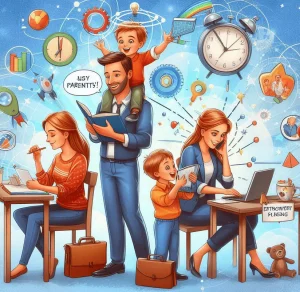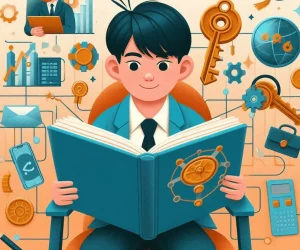What an important question! As a parent of a baby or toddler, you want to help your little one reach his or her potential. We know that language and social skills are very important for success in school and in life. And what better time to start than when your child is young?
First, the bad news–the really bad news. “Excessive viewing before age three has been shown to be associated with problems of attention control, aggressive behavior and poor cognitive development. Early television viewing has exploded in recent years, and is one of the major public health issues facing American children,” according to University of Washington researcher Frederick Zimmerman.
In this article, we’ll look at the suggested links between screen time and lower vocabulary, ADHD, autism, and violent behaviour. Then we’ll look at how you might possibly use baby TV and movies to help your child learn.
LOWER LANGUAGE SKILLS A University of Washington study shows that 40% of three-month-old babies and 90% of two-year-olds “watch” TV or movies regularly. Researchers found that parents allowed their babies and toddlers to watch educational TV, baby videos/DVDs, other children’s programs and adult programs.
What can we learn from this study?
* “Most parents seek what’s best for their child, and we discovered that many parents believe that they are providing educational and brain development opportunities by exposing their babies to 10 to 20 hours of viewing per week,” says researcher Andrew Meltzoff, a developmental psychologist.
* According to Frederick Zimmerman, lead author of the study, that’s a bad thing. “Exposure to TV takes time away from more developmentally appropriate activities such as a parent or adult caregiver and an infant engaging in free play with dolls, blocks or cars… ” he says.
* Infants age 8 to 16 months who viewed baby programs knew fewer words than those who did not view them.
“The more videos they watched, the fewer words they knew,” says Dr. Dimitri Christakis. “These babies scored about 10% lower on language skills than infants who had not watched these videos.”
* Meltzoff says that parents “instinctively adjust their speech, eye gaze and social signals to support language acquisition”–obviously something no machine can do!
* Surprisingly, it didn’t make any difference whether the parent watched with the infant or not!
Why did these babies learn more slowly? Dr. Vic Strasburger, pediatrics professor at the University of New Mexico School of Medicine, says “Babies require face-to-face interaction to learn. They don’t get that interaction from watching TV or videos. In fact, the watching probably interferes with the crucial wiring being laid down in their brains during early development.”
ADHD Attention deficit hyperactivity disorder is characterized by problems with attention, hyperactivity, and impulsivity. A link between ADHD and early TV viewing has been noted by Dimitri A. Christakis, MD, MPH et al.
“In contrast to the pace with which real life unfolds and is experienced by young children, television can portray rapidly changing images, scenery, and events. It can be overstimulating yet extremely interesting, ” say the researchers. “We found that early exposure to television was associated with subsequent attentional problems.”
The researchers examined data for 1278 children at the age of one year and 1345 children at age three. They found that an extra hour of daily television watching at these ages translated into a ten percent higher probability that the child would exhibit ADHD behaviours by the age of seven.
AUTISM Autism is characterized by poor or no language skills, poor social skills, unusual repetitive behaviours and obsessive interests. A University of Cornell study found that higher rates of autism appeared to be linked to higher rates of screen time.
The researchers hypothesize that “a small segment of the population is vulnerable to developing autism because of their underlying biology and that either too much or certain types of early childhood television watching serves as a trigger for the condition.”
In his commentary on this study in Slate magazine, Gregg Easterbrook notes that autistic children have abnormal activity in the visual-processing areas of their brains. As these areas are developing rapidly during the first three years of a child’s life, he wonders whether “excessive viewing of brightly colored two-dimensional screen images” can cause problems. I find this comment highly interesting, as it would apply to the full spectrum from “quality children’s programming” to adult material.
VIOLENT BEHAVIOUR The National Association for the Education of Young Children identified the following areas of concern about children watching violence on TV: * Children may become less sensitive to the pain and suffering of others. * They may be more likely to behave in aggressive or harmful ways toward others. * They may become more fearful of the world around them.
The American Psychological Association reports on several studies in which some children watched a violent program and others watched a nonviolent one. Those in the first group were slower to intervene, either directly or by calling for help, when they saw younger children fighting or breaking toys after the program.
Now that we know the bad news…
Is it possible to use movies at all? I think it is. I believe the key is to USE the program, not just WATCH it. Most people know that it’s very good to read to babies, but no one would set a book before a baby and walk away, thinking it will do her any good at all!
Rock your baby or tap the rhythm to classical music or children’s songs.
Be very, very choosy about what your young child watches–and watch with him. Does the program show kindness, helpfulness, generosity… whatever values you wish your little one to learn?
When she is old enough to relate to the images of people, animals and toys, talk to her about what she’s seeing. “Look at the puppy. He’s playing with the kitten. They’re friends. Mommy is your friend.” “The baby birds are hungry. They’re calling for their mommy. She’s going to come back with some food.” “Oh no! The baby lamb is lost. I wonder if the shepherd will find him.”
Make screen time a special–and highly limited–time that the two of you share. Treat a baby or young children’s movie the way you treat a book–as another tool to give you topics for interaction with your little one.






More Stories
How the Best Educational Apps for 5 Year Olds Inspire Smart and Happy Learners
How to Empower Elementary Children with Confidence and Joy in Education
Why Teaching Programming to Children Is Essential for the Future